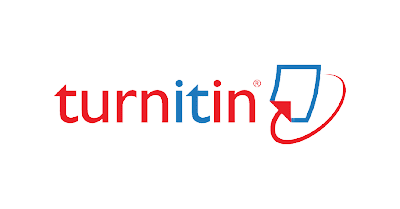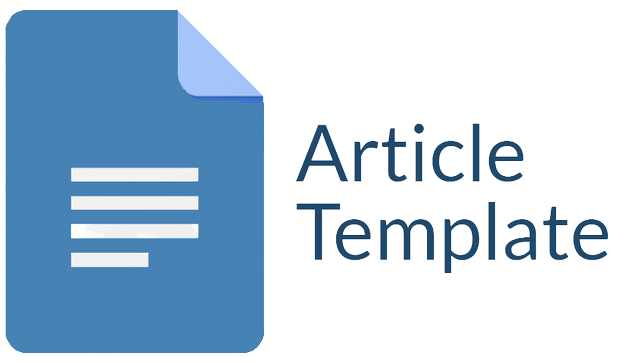PENGARUH MEDIA AUDIO VISUAL DALAM MENELAAH STRUKTUR DAN KEBAHASAAN PUISI RAKYAT
Abstrak
Puisi rakyat merupakan warisan budaya bangsa yang wajib dipelajari. Namun, kemampuan menelaah struktur dan kebahasaan puisi rakyat kelas VII SMPN 1 Muaro Jambi yang masih mengalami kesulitan. Penelitian ini bertujuan untuk mengetahui pengaruh media audiovisual dalam menelaah struktur dan kebahasaan puisi rakyat (puisi lama) dengan media audiovisual pada siswa kelas VII semester genap SMP Negeri 1 Muaro Jambi. Penelitian ini menggunakan penelitian eksperimen. Kelas ekperimen diberikan perlakukan dengan media audio visual dan kelas kontrol diberikan pembelajaran konvensional atau tanpa menggunakan media audio visual. Populasi dalam penelitian ini adalah semua kelas VII SMP Negeri 1 Muaro Jambi terdapat enam kelas yang berjumlah 183 siswa. Sampel penelitian yaitu siswa kelas VII E terdiri dari 30 siswa sedangkan kelas VII F terdiri dari 32 siswa. Teknik pengumpulan data dengan tes (pretest dan postest) , observasi, dan dokumentasi. Teknik analisis data menggunakan uji t yang diawali dengan uji prasayarat (uji normalitas dan homogenitas). Hasil penelitian menunjukkan bahwa nilai sig (2-tailed) hasil post-test sebesar 0,004 lebih kecil dibandingkan nilai taraf signifikansi sebesar 0,05, sehingga hipotesis nol (Ho) ditolak dan hipotesis alternatif (Ha) diterima. Artinya terdapat pengaruh media audio visual terhadap kemampuan menelaah struktur dan kebahasaan puisi rakyat rakyat pada siswa.
##plugins.generic.usageStats.downloads##
Referensi
Adittia. 2017. “Penggunaan Media Pembelajaran Audio Visual Untuk Meningkatkan Hasil Belajar IPS Pada Siswa Kelas IV SD.” Mimbar Sekolah Dasar 4(1): 9–20.
Aisy, Salsabiil Rihhadatul, and Hudaidah Hudaidah. 2021. “Pendidikan Indonesia Di Era Awal Kemerdekaan Sampai Orde Lama.” EDUKATIF : JURNAL ILMU PENDIDIKAN 3(2).
Dofir. 2020. “Analisis Kontrastif Pendidikan Di Indonesia, Di Finlandia, Dan Ajaran Ki Hajar Dewantara.” Jurnal Ta’dib 18(1).
Fa Biola, Githa Shang Inaa, and Mersilina Luther Patintingan. 2021. “PENGARUH MEDIA AUDIOVISUAL TERHADAP PENGUASAAN KOSAKATA BAHASA INGGRIS SISWA KELAS III SEKOLAH DASAR.” WASIS : Jurnal Ilmiah Pendidikan 2(1).
Hamid, Mustofa Abi et al. 2020. “Media Pembelajaran.” Media pembelajaran.
Hermawan, Iwan. 2019. Metodologi Penelitian Pendidikan. Kuningan: Hidayatul Quran.
Kemendikbud. 2016. Bahasa Indonesia Kelas VII SMP/Mts. Jakarta: Kemendikbud.
Lafamane, Felta. 2020. “Karya Sastra (Puisi, Prosa Drama).” Jurnal Pendidikan Bahasa dan Sastra Indonesia.
Nurcahyo, Muhammad Aqmal, and Yunika Afryaningsih. 2018. “PENERAPAN LITERASI DIGITAL BERBASIS KEARIFAN LOKAL DALAM PEMBELAJARAN BAHASA INDONESIA.” Kongres Bahasa Indonesia.
Priyono, Ery Agus. 2018. “Kontroversi Penerapankurikulum 2013 Dalam Kajian Filsafat Ilmu Berbasis Paradigma Kritical Neurman.” Law, Development and Justice Review 1(1).
Sadikin, Ali, and Afreni Hamidah. 2020. “Pembelajaran Daring Di Tengah Wabah Covid-19.” BIODIK 6(2).
Sugiyono. 2015. METODE PENELITIAN KUANTITATIF, KUALITATIF, DAN R&D. Bandung: ALFABETA.
Sukarto, Kasno Atmo. 2019. “Kritik Sastra Dan Implementasi Pengajaran.” Pujangga 4(1): 19.
Tarigan, Hendry Guntur. 2015. Pengajaran Sintaksis. Bandung: Angkasa.
Yusuf, A. M. 2013. Metode Penelitian Kualitatif, Kuantitatif Dan Penelitian Gabungan (Pertama). Jakarta: Rineka Cipta.
##submission.copyrightStatement##
##submission.license.cc.by-sa4.footer##Jurnal allows anyone to compose, correct, and do derivative works, even for commercial purposes, as long as they credit for the original work. This license is the freest. It is recommended for maximum distribution and use of licensed material.
The submitted paper is assumed not to contain any proprietary materials that are not protected by patent rights or patent applications; The responsibility for technical content and protection of proprietary materials rests with the authors and their organizations and not the responsibility of journal or its editorial staff. The primary (first/appropriate) author is responsible for ensuring that the article has been viewed and approved by all other authors. The author's responsibility is to obtain all necessary copyright waivers to use any copyrighted material in the manuscript before submission.
Jurnal Pendidikan, Sains dan Teknologi allows the author(s) to hold the copyright without restrictions and allow the author(s) to retain publishing rights without restrictions. Jurnal Pendidikan, Sains dan Teknologi CC-BY-SA or an equivalent license as the optimal license for the publication, distribution, use, and reuse of scholarly work. Jurnal Pendidikan, Sains dan Teknologi allows the author(s) to hold the copyright without restrictions and allow the author(s) to retain publishing rights without restrictions. Jurnal Pendidikan, Sains dan Teknologi CC-BY-SA or an equivalent license as the optimal license for the publication, distribution, use, and reuse of scholarly work.
In developing strategy and setting priorities Jurnal Pendidikan, Sains dan Teknologi recognize that free access is better than priced access, libre access is better than free access, and libre under CC-BY-SA or the equivalent is better than libre under more restrictive open licenses. We should achieve what we can when we can. We should not delay achieving free in order to achieve libre, and we should not stop with free when we can achieve libre.
Jurnal Pendidikan, Sains dan Teknologi is licensed under a Creative Commons Attribution-ShareAlike 4.0 International License.
You are free to:
- Share a copy and redistribute the material in any medium or format
- Adapt a remix, transform, and build upon the material for any purpose, even commercially.
- The licensor cannot revoke these freedoms as long as you follow the license terms.






